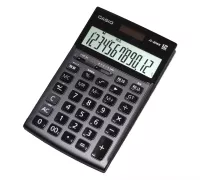Pi (π) is a fundamental mathematical constant representing the ratio of a circle's circumference to its diameter, approximately 3.14159. It is a ubiquitous number found in numerous formulas across both mathematics and physics. Notably, some of these formulas can be used to define Pi itself, offering an alternative approach that circumvents the need to explicitly define the length of a curve.
2010: Celebration of Tau Day
Since 2010, there has been a movement to celebrate Two Pi Day or Tau Day on June 28, driven by the proposal to replace π with τ = 2π in mathematical formulas.
2015: Pi Day Significance
In 2015, Pi Day was particularly significant because the date and time 3/14/15 9:26:53 reflected many more digits of pi, making it a noteworthy celebration for math enthusiasts.
Mentioned in this timeline

An electronic calculator is a portable electronic device designed for...
India officially the Republic of India is a South Asian...

Books are a means of storing information as text or...

Kate Bush is an English singer-songwriter record producer and dancer...

The wolf or grey wolf is a canine native to...

Pi Day is an annual celebration of the mathematical constant...
Trending

17 days ago Lamar Jackson's mother scolded him; Hamilton, Bateman to play against Bengals.

2 months ago Kyler Murray Exits Game Due to Foot Injury During Cardinals vs. Titans
2 months ago Jaguars entertain trade possibilities for WR Brian Thomas Jr. as Steelers seek receiver.

5 months ago Drake Maye and Wife Ann Michael Donate Wedding Gifts to Local Shelter

2 months ago Cowboys Rumored to Target Maxx Crosby in Potential Trade with Raiders.
Xavier Glenn Worthy is an American football wide receiver for the Kansas City Chiefs He played college football at the...
Popular

Candace Owens is an American conservative political commentator and author...

Ilhan Omar is an American politician currently serving as the...

XXXTentacion born Jahseh Dwayne Ricardo Onfroy was a controversial yet...

Tom Cotton is an American politician and Army veteran currently...

Kelsey Grammer is an accomplished American actor producer and singer...
The Kennedy Center Honors are annual awards recognizing individuals and...